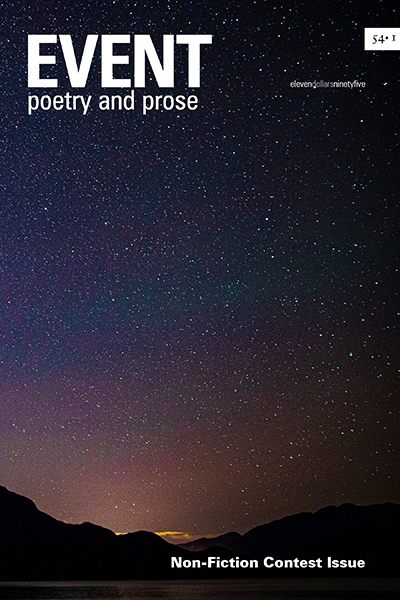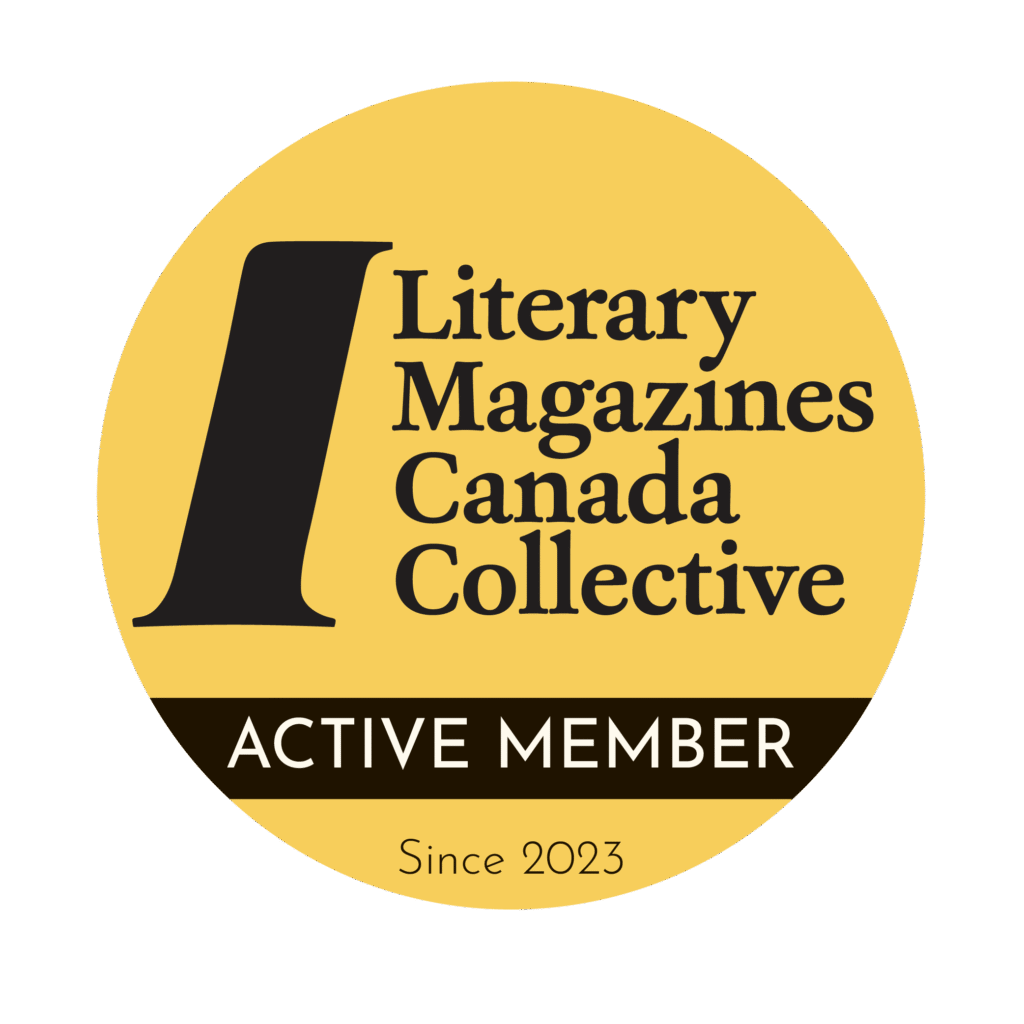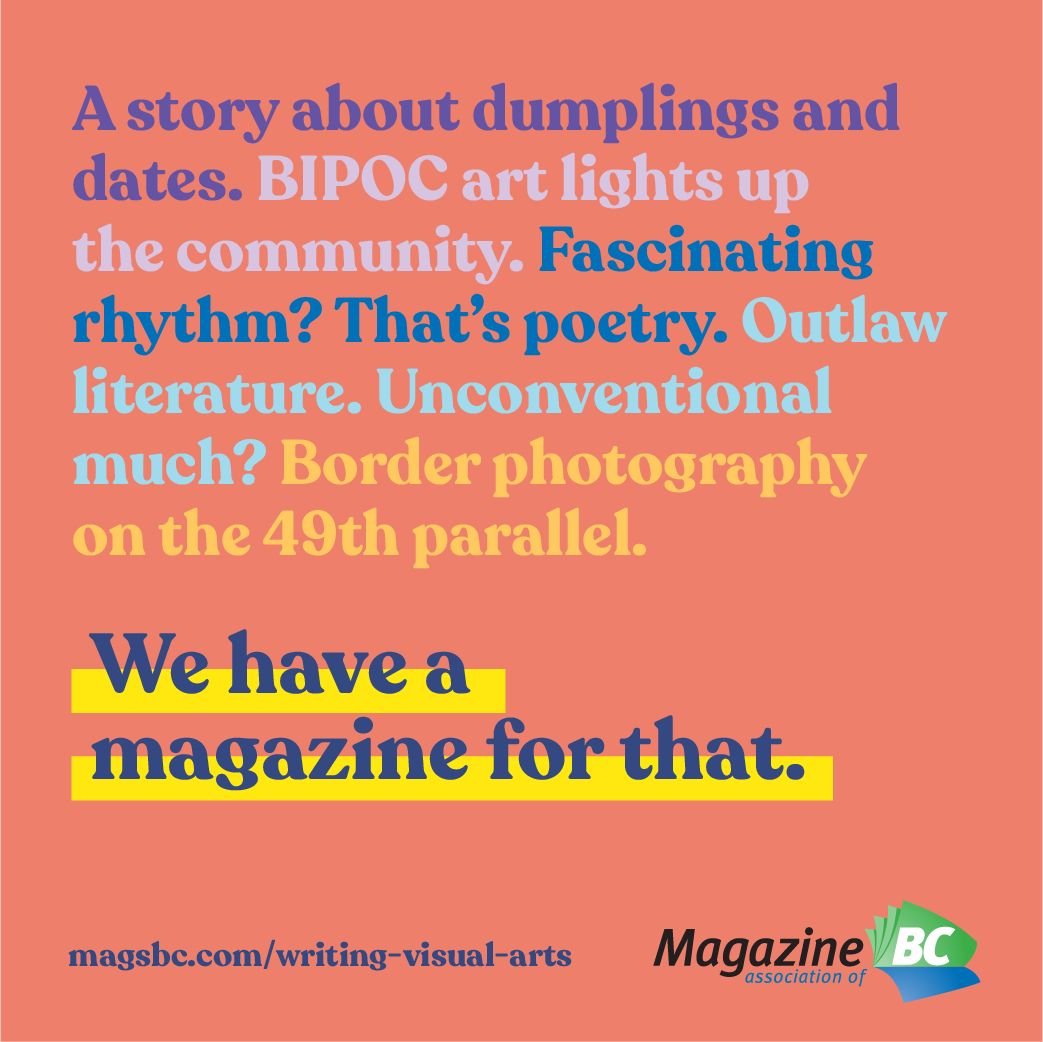Students Respond: Chemical Warfare by Brad Buchanan
Poetry students at Douglas College were asked to respond to poems in EVENT, discussing observations on technique as well as what they learned as writers. Over the summer we’re posting a selection of their thoughts with the accompanying poems. The poem below, by Brad Buchanan, first appeared in EVENT 45/3. Following the poem is an excerpt from a response by Jonathan Fairful.
Chemical Warfare
the promised
and threatened
killing cure
is no longer avoidable
after all the talk
of a surgical strike
by a single agent
scrupulous, expert
we go in the end
with the old-school
scorched earth
blood and thunder
approach
risking all the usual
friendly casualties
of biological crossfire
atrocious perhaps
but at least familiar
if we fail it won’t be
for lack of firepower
all starting today
with a chemical cocktail
that Molotov himself
would be proud to heave-Brad Buchanan
The poem first caught my attention with its title, then with its narrow silhouette and light use of punctuation. Save the one comma which I only noticed later, the poem is completely devoid of punctuation of any kind. The use of enjambment as both a means of emphasis and as a substitute for punctuation is interesting and is present in all of Buchanan’s poems in this issue.
The first two lines are a good example of how he both punctuates and emphasizes using enjambment. They read “the promised/and threatened.” The enjambment emphasizes the second words of both lines, creating a contrast between them, which in turn gives a bit of foreboding to lead into the third line. The harsh consonance of the third line helps to convey the overall dark tone of the poem, while the emphasis of the word “cure” through enjambment serves to create another contrast, this time with the immediately preceding word “killing”…
…The narrow lines of the poem which gave it the silhouette that first caught my eye are also a major part of how the poem works. Every single line has been pared down to the essential elements, which gives every line impact as well as the sense that it is adding something. The shortness of the lines also works with the lack of punctuation to give the poem an almost break-neck pace. The lines being short also allows each lines enjambment to be even more effective, and many of the lines end on impactful words such as “strike” or “crossfire” to further this effect.
As a writer, I feel that I now understand how to write a poem using little to no punctuation. The use of enjambment is key, as it is needed to break up the flow of words and give the reader some indication of where one sentence or clause transitions to another. For example, the enjambment between the fourth and fifth lines–“is no longer avoidable/after all the talk”–serves as a substitute for a period, creating a break in the stream of words and allowing the reader to realize that a new thought has started. However, enjambment does not work as well as actual punctuation, as it can sometimes be uncertain whether or not the break is intended for emphasis or to separate clauses or sentences. The lack of punctuation also gives a faster pace to a poem, since the brief delay caused by one’s eyes moving from the end of one line to the start of the next, especially in poems with short lines like this one, is much shorter than the pauses created by punctuation marks. I also gained a new understanding on how to use enjambment to create a better sense of impact: ending lines on impactful words. Lastly, this poem has given me new ideas about how to use contrast to make a poem’s message stronger, and how this can be done with just a pair of words.
-Jonathan Fairful
—
Read more of Brad Buchanan’s poetry in EVENT 45/3.














